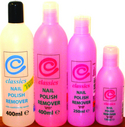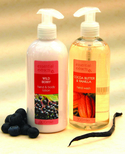Personal pressures
15 November 2011Eye-catching graphics, an array of materials and innovative shapes are becoming commonplace in the personal care packaging market, but can innovation provide ways to overcome the economic crisis. Sally Cousins reports on this vibrant sector
The personal care market is a dynamic sector in which leading brands and own-labels sit together comfortably on shelf, and packaging is an essential unique selling point of the product. However, a closer look at this sector reveals it isn’t untouched by global economic uncertainty. When times get tough the consumer is king in the personal care sector: swapping from branded products to own-label or buying products on offer is prevalent when money is tight.
A recent report by Euromonitor International – Demographic Changes: The Impact on Beauty and Personal Care Packaging, by Dr Benjamin Punchard – shows that, with disposable incomes being squeezed, consumers have looked to cut spending, and discretionary purchases in beauty and personal care have taken a hit.
But it isn’t just consumers who are affected by the downturn. Brands and retailers have also adjusted their packaging specification requirements in response to consumer belt-tightening.
RPC Bramlage Wiko UK’s general sales manager Ian Smith recognises that the situation is having an effect on how brands and filling companies are using their cash and how they protect themselves from the risks of the possible slowing of consumer sales. “Reducing inventories is one solution, and value engineering packs is another. Companies are continually evaluating options to save money and reduce risk, much as households are.”
Also outlined in the Euromonitor report is that numerous discounting initiatives are now employed by retailers to help rejuvenate consumer confidence and spending habits. This is a sector saturated with the Buy One Get One Free offer (BOGOF) and half price deals – it seems a consumer would be hard pushed to find a product that is not on offer.
Euromonitor’s report also states that alongside the refill pack, another economic option is the value pack. This was once confined to commodity products in food and beverages, but the refocus on value has made consumers more accepting of bulk offers in beauty and personal care, and offering larger alternatives of a pack no longer damages a brand’s standing.
The report predicts that the trend for consumers cutting back on spending on beauty, opting for cheaper alternatives in essential categories and cutting out products altogether is likely to continue despite future improvements in the global economy. It highlights that this may restrict packaging manufacturers from the introduction of revolutionary innovations, but in order to attract the attention of busy consumers, differentiation through the packaging format, pack shape and size is expected to develop.
RPC’s Smith feels this differentiation goes hand in hand with the now common short timespan on shelf for brands, and this isn’t without its problems for packaging suppliers if the process isn’t managed efficiently. “The product lifecycle has got shorter with new products performing better for brands. There is a trend for visual changes and rebranding to refresh products and to create interest and differentiation on shelf. This can make the demand curve over the product’s life strongly geared to initial launches. It is essential that the development and implementation process is well planned to avoid costs associated with mismanagement,” says Smith.
Cost plays a critical role and, according to glass producer Stölzle Flaconnage, the most effective branding for the least amount of money is being looked for. Sales director for perfumery and personal care, Mark Devonald Smith says: “A small production run will result in a more expensive bottle than a large one. A custom designed bottle will increase the exclusivity of a product but the resulting price tag could discourage the customer. It is a difficult balance of what is the right level of investment for the ultimate return”
Medica Packaging has noticed a cautionary trend with brands. Sales director for pharmaceuticals Deborah Greenwood feels the current economic situation shouldn’t stifle innovation, although the company has seen a more ‘wait and see approach’ in the launch of high-end personal care products, with the more expensive items being ‘pulled back’ until the economic gloom is over. “The emphasis is on not compromising on the look of the packaging, but brand owners are putting the pressure on quality at a lower price.”
Fast moving and dynamic – this is a sector that is dominated by image. In a crowded retail environment generating trust and loyalty is essential, but the pack has to work and functionality is key to creating successful brand identity.
Rieke Dispensing recognises that market positioning is a key driving force in the development of new dispensing systems. Managing director Mark Box says: “In the competitive environment of personal care it is essential for manufacturers to maintain market share for existing brands and at the same time seek to develop the next new trends and must-have product. Choosing the right packaging is as important as developing the appropriate formulation.”
Rieke developed its Airless HVDS system to achieve up to 98% product evacuation. It combines airless and piston-up technology to push the product up from the container. This eradicates the problem of a product that cannot be accessed, so is wasted.
Although plastics dominate the personal care sector, cartons also have their part to play. Chesapeake has developed a range of techniques in a move to add a more ‘tactile’ feel to cartonboard, particularly suited at creating stand-out. It has been focusing on print finishes and effects that provide tactile qualities such as ‘soft-touch’ varnishes or inline reticulation processes that add prominent varnish lines. The company’s natural aesthetics have been ‘on trend’ for a while – uncoated cartonboards with a rough finish or cartons enhanced with micro-embossing being favourites.
Micro-embossing combined with varnish techniques have also been developed to produce the effects that mimic nature, such as leather, stone, feathers or snakeskin. According to the company, 3D qualities and effects that provide depth and the impression of movement are in demand.
Chesapeake’s Glint, a printed holographic effect which was initially applied to labels, is now enhancing cartons too. Constructional design can help to accentuate movement and product presentation. This includes optical enhancements to cartons with clever fitments that hold or suspend products.
Design and development director Janet Shipton says: “For personal care products the use of clean lines is paramount. Cartons with subtle enhancements and embellishments help lift premium products to present a classic look and finish.”
With this in mind, the company developed Impressions – a novel paperboard concept that provides a 3D quality. Impressions is formed by using a specialist low energy process that makes it possible to form paperboard material into a range of distinctive shapes. This can help to promote and complement a brand and offers a more environmentally responsible alternative to plastics packaging.
Packaging design agency Pearlfisher has also recognised that structure and shape is essential in this sector. The company has a dedicated ‘future insight’ team that looks into overall shifts in consumer spends and brand awareness. Founding creative partner Jonathan Ford says there is a change in how brands want to be represented to the consumer. “Brands are realising through packaging that being tactile is key, and embossing and diecutting and creating structure and shape is being used to enhance products,” he says.
Ford feels that sustainable brands are the big players going forward in the personal care market. “Sustainable brands represent a new breed and they have moved away from being ‘worthy’ to being glamorous and stylish and look good in the bathroom.”
The demand to create a sustainable, environmentally friendly pack isn’t just focused on imagery. Light weighting is a continual process in this sector in achieving not only cost savings, but also lowering the carbon footprint of brands and retailers. “The real focus is on sustainability in the personal care sector and how to take material out of a pack,” says APPE marketing manager Kinza Sutton. “Light weighting has a knock-on effect in reducing the number of lorries needed to transport the product.” APPE is a significant producer of PET packaging and has branched into the personal care sector over the past four years. Its advice on light weighting is that it’s a complex process and it has invested in a dedicated team to ensure light weighting is done correctly. Sutton says: “Light weighting has to be balanced with the performance of the pack on filling lines and during transportation.”
Shrink sleeving has also made significant inroads into this sector where labelling was traditionally used. Richard Cutworth, business development manager at Chadwicks concludes: “Sleeving offers aspects particularly beneficial to the personal care market, such as tamper evidence features, and with new developments in UV flexo the quality of finished products is continuing to improve as the price for origination drops – the opportunities to create new brand identities through sleeving in the personal care market are immense.”
Chesapeake’s Impressions is a novel paperboard concept providing 3D quality Impressions A range of HDPE bottles manufactured by RPC Containers for KK Toiletries’ budget Classics nail polish remover Classics RPC’s PET bottle for Marks & Spencer’s Essential Extracts personal care range incorporates 30% PCR material Essential Extracts Chesapeake’s Aquafresh cartons use Glint technology Aquafresh





